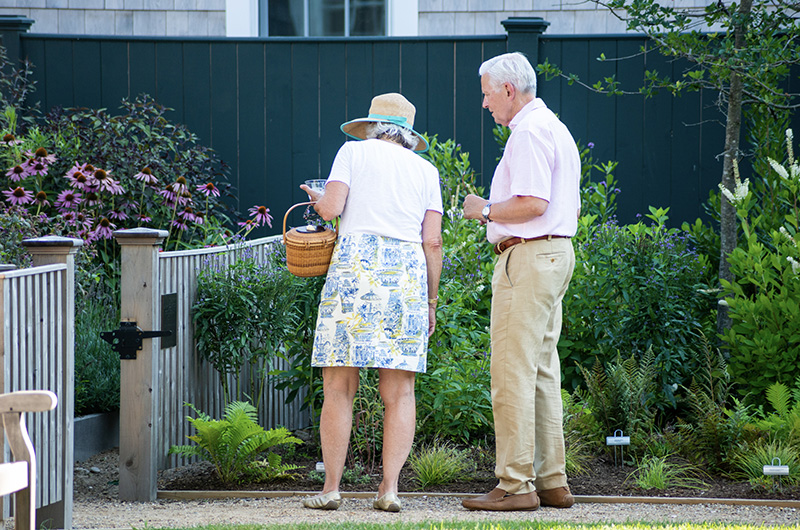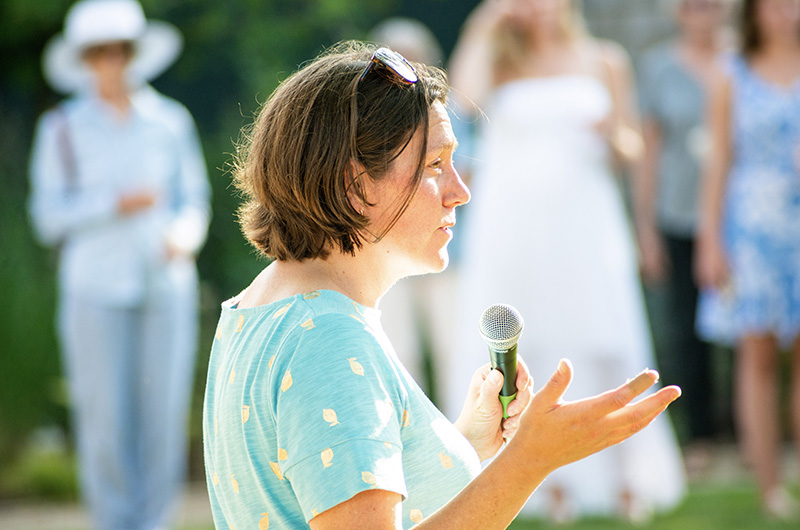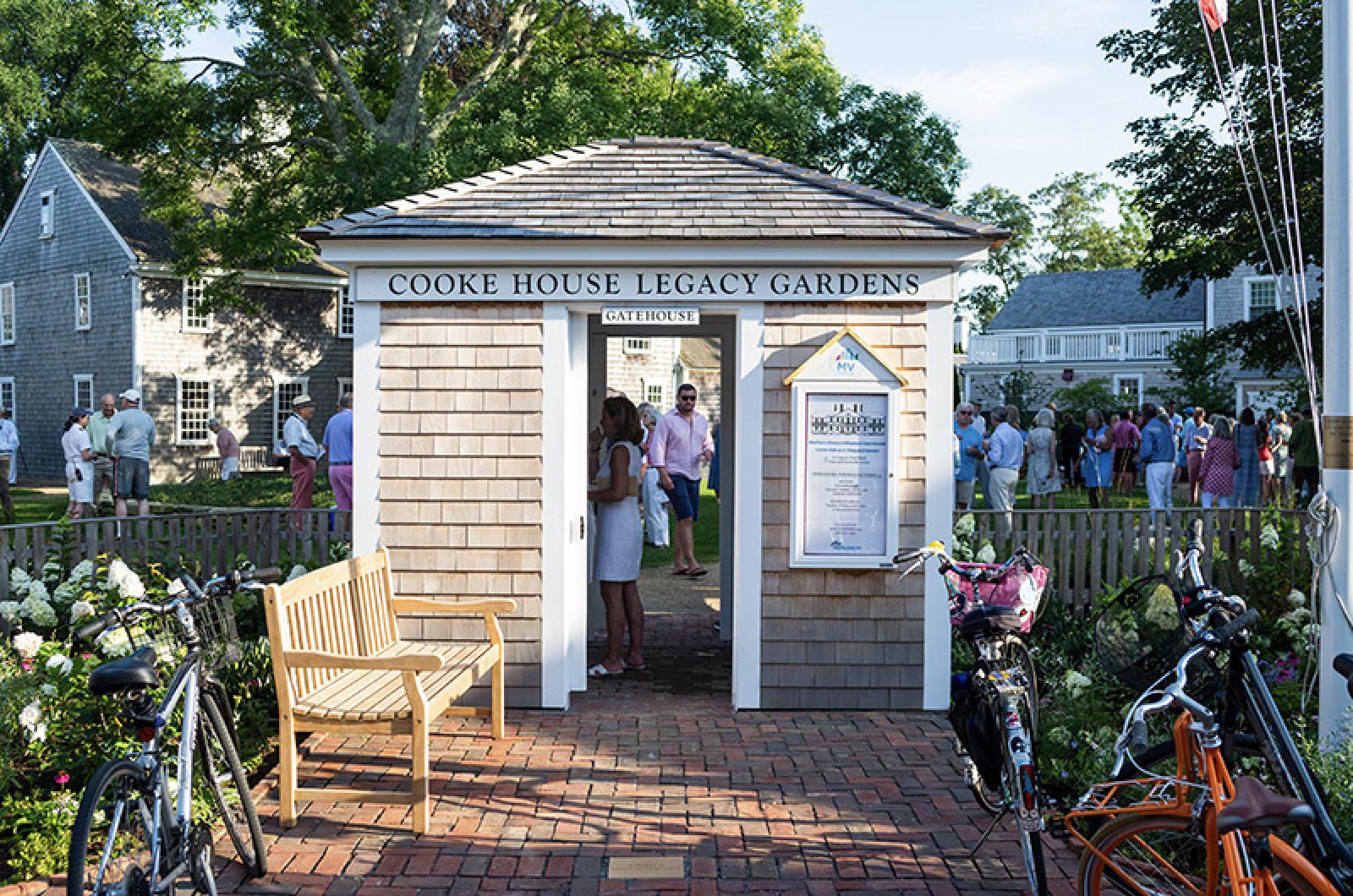The Martha’s Vineyard Museum is now officially a two-town operation, following the dedication Saturday of its Cooke House Legacy Gardens in Edgartown.

“We are serious about sustaining and enhancing our relationship with Edgartown,” said museum executive director Heather Seger as she welcomed a crowd of more than 120 people to the late-afternoon event at Cooke and School streets, where the grounds of the 270-year-old Thomas Cooke House have been transformed into a series of gardens reflecting Island history.
The Cooke House — named for an Edgartown Harbor customs officer who lived there in the late 1700s — was the museum’s home from 1932, when it was purchased by the organization then known as the Dukes County Historical Society, until 2017, when the museum moved to the former Marine Hospital in Vineyard Haven.
While some of the Cooke House land was sold as part of the move and has been developed into homes, longtime Edgartown resident Nancy Vietor quietly campaigned among neighbors for donations to preserve the rest of the land as what she calls a “learning loop” of gardens on different Island themes.
“I thought there was a possibility that this little garden in the center of a very busy Edgartown would be a still point in [the] turning world,” Ms. Vietor said Saturday, quoting from the T.S. Eliot poem Burnt Norton.
Along with volunteers like her friend Cheryl Doble, who worked on the gardens, Ms. Vietor thanked donors and the local landscapers and other contractors contributed time and materials.

The wide-ranging design team included Lil Province, Tim Boland, Roxanne Kapitan, Kris Horiuchi, John Hoff, Mark Crossland and Carlos Montoya.
The three-year project included the tricky challenge of regrading the lot to preserve the house — without losing a majestic pagoda tree that was once a cutting from the venerable South Water street tree.
“We had to move 80 dump trucks worth of soil,” Ms. Vietor said. “Because we couldn’t regrade the Cooke House, we brought the land down.” Only a wide circle around the towering pagoda tree, hemmed by a low retaining wall, remains to show the original height of the grounds.
Just past the gatehouse, where the counter is covered with a new decorative painting by Island muralist Linda Carnegie, the self-guided garden loop leads counterrclockwise past a sandplain grassland with glacial boulders, a millstone fountain encircled by benches, shrubs and trees, a grove of beetlebungs and other indigenous Martha’s Vineyard species and a fenced-in colonial garden with raised beds growing culinary, medicinal and household plants.
A compact shed in the colonial garden opens up for special events and hands-on activities, including free Play with the Past sessions for children on Friday mornings from 10 a.m. to noon and a concurrent, all-ages series called Colonial Life in the Kitchen Garden.
Continuing past the colonial garden, with its profusion of lavender, coneflower and bee balm, visitors next see a trio of paintings, reproduced on metal sheets, depicting the Edgartown Harbor in the late 18th century with sailing vessels and a shore still empty of houses. Diane Boswell oversaw the work on the harborscape panels.
“We tried to embrace the front of the house, and show the view Thomas Cooke would have seen looking out his door,” Ms. Seger said.
Set into the lawn on the Cooke street side of the property, a granite slab carved with a birds-eye map of Edgartown circa 1850 was one of the most popular attractions at Saturday’s dedication, as guests pointed out their houses or noted Osborn’s Wharf. Alan Gowell oversaw that project.
The garden loop then leads between the pagoda tree and a profusely blooming perennial border along Cooke street.
“You come out at the gatehouse in 2021, having started in the glacial age,” Ms. Vietor said. Throughout the campus there are roomy wooden benches with plaques commemorating their donors.
The Cooke House itself remains closed to the public, but the gardens are open whenever the museum flag and American flag are flying outside the gatehouse.








Comments (4)
Comments
Comment policy »